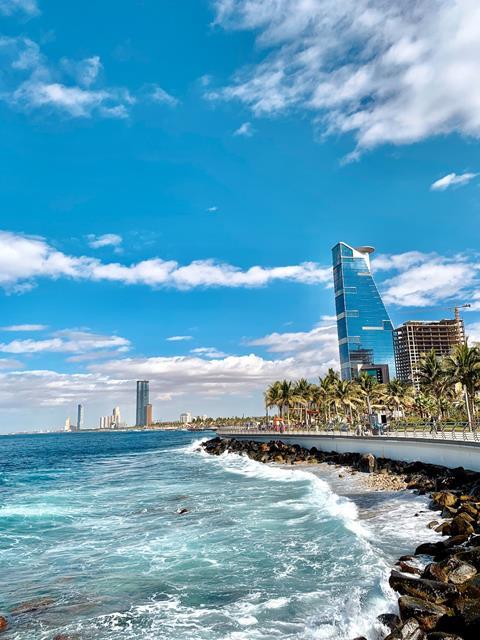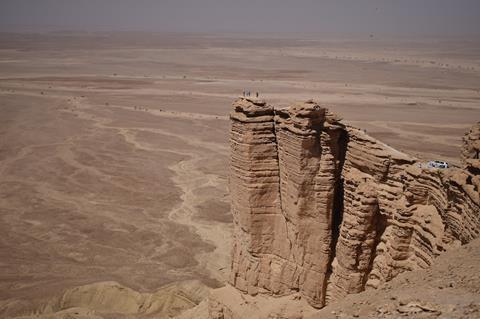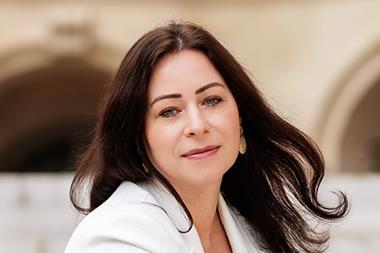Large budget surpluses due to energy demand, expanding tourism and robust demographics mean the GCC country is well-positioned for foreign capital, writes Alexis Crow

When the price of oil runs north of US$80 (€73.5) per barrel for a sustained period of time, things can feel quite heady in the Gulf Cooperation Council (GCC) – that is, within the Middle East’s major energy exporting countries. Many of these economies balance their government budgets around US$80 per barrel, and in a time of elevated oil prices, state coffers have the potential to become flush with cash, supporting trade surpluses and generous public spending.
In the case of the Middle East’s largest economy, Saudi Arabia, the continued implementation of fiscal, labour and sector-specific reforms – set against the backdrop of a cascade of social reforms throughout the country – have led to a flourishing of non-oil based GDP growth in recent years, with prospects for sustained growth in 2023 and beyond. In tandem, the government’s continued focus on growing capital markets within the country continue to yield opportunities for the inclusion of foreign capital, and the bolstering of the non-oil economy.
Moreover, in our current age of a fragmented geopolitical landscape, Saudi Arabia’s geostrategic position renders it especially advantageous for investors and executives with an eye on long-term growth. Indeed, as the global energy map has been rewritten in the wake of Russia’s invasion of Ukraine, resource ties between GCC countries and Europe have strengthened, as Saudi Arabia and other countries have stepped up exports of oil and natural gas to Europe. Looking to Asia, it is evident that Saudi Arabia’s trade ties have historically been lined with traditional forms of energy (some of which have also been rejigged in the face of the Russia-Ukraine conflict, and associated bans on Russian crude). Beyond oil, mutual investments between Asia’s largest economies and Saudi Arabia – in sectors such as gaming, and cloud computing – evidence the extent to which trade between some of the fastest growing economies in the world extends well beyond energy. Accordingly, western investors should be positioning themselves to capitalise upon diversified industries within the country.
In terms of investment, obvious arenas for growth include solar, wind, hydrogen and ammonia – what we might call traditional ‘energy-adjacent’ sectors, building in demand amid a global hot pursuit of decarbonisation. For infrastructure, real estate and private equity investors, the government’s full-tilt focus on dynamically expanding the country’s tourism industry spurs an ability to cater toward rising demand for domestic, religious, leisure and even business travel. The growth prospects for such sectors also have the potential to create positive spillover effects into local employment, consumption and demand for services, hence strengthening the outlook for the diversified macro economy.
The wider macro picture

Saudi Arabia has retained pole position as one of the fastest-growing major economies in the world, supported by a strong increase in non-oil based GDP growth – a backbone of employment in the country. At the close of 2022, job creation in the country hit a five-year high, and non-oil based PMI expanded at the highest rate in seven years. Business confidence has also recovered since the troughs of 2020, as global supply-chain problems have eased and inflation has moderated.
As indicated above, the road to such flourishing in non-oil based GDP growth has been paved with fiscal rectitude. During the shocks of low-to-negative oil prices in 2020, Riyadh reined in spending, cut back on a cost of living allowance and tripled VAT. In recent years, even despite an elevated oil price environment resulting in eight-year highs of export revenues, Saudi Arabia’s successive budgets evidence continued restraint in government spending, with a focus on reducing the fiscal deficit. Indeed, it is notable that amid a perhaps western culture of excessive borrowing to fuel growth, Saudi Arabia’s government debt to GDP – by contrast – hovers around a modest 30% (in contrast with 147% for Italy, or 115% for the US).
In addition to fiscal reforms, ongoing social reforms and changes to employment regulation have dovetailed into stimulating private-sector employment. Efforts to include more women in the workforce have resulted in a dramatic increase in the female labour-force-participation rate, which has expanded by 62% within five years. Additionally, the labour reform initiative launched in 2020 and implemented in 2021 holds the potential to initiate greater labour mobility for foreign workers in the private sector, which is a boon for both local employers as well as a growing expatriate talent base (foreign investors should also still be cognisant of the Nitaqat, or Saudisation regulation, which mandates that employers in the private sector attract and retain a minimum percentage of local Saudi citizens).
Capital markets in Saudi Arabia have also been deepening and widening. In the wake of the inclusion of the country’s Tadawul exchange into the MSCI index, foreign investors have the potential to invest in domestic and regional growth via local equity markets. Even despite the pullback in global capital markets in the wake of Russia’s invasion of Ukraine, the Saudi Arabia bourse posted record IPOs in 2022, with a robust pipeline set for 2023. In addition, the central bank has proven to be adept at stepping in to ease liquidity crunches with local banks, via open-market operations.
In a clear indication of our fragmented (rather than bipolar, or unipolar) – geo-economic landscape, Saudi Arabia’s Finance Minister Mohammed Al-Jadaan has recently indicated that the country is open to settling trade in other currencies. Crucially, this does not just mean the Chinese yuan (as Riyadh has indicated its openness to settling trade and natural gas in RMB) – but also includes the euro (indeed, Saudi Arabia has increased bond sales in euros in recent years).
It should be noted that venturing into settling trade and issuing debt in other currencies, though, does not necessarily spell the end of ‘dollarisation’. One might venture to assume that Riyadh is unlikely to relinquish the dollar peg to the Riyal, given the outsized role that the US Federal Reserve plays in global financial conditions, monetary policy and financial stability.
Geostrategic position: lynchpin and launchpad
As highlighted, Saudi Arabia has been stepping up energy flows to crisis-hit European countries, as Europe tries to wean itself off Russian gas, oil and petroleum products, such as diesel. Similarly, some Asian countries have diversified their energy import mix – while Russia has overtaken Saudi Arabia as the largest supplier of crude oil to China, Japan has actually imported record amounts of oil from Saudi Arabia and is now importing blue ammonia from the country. Korea, too, is increasing imports of Saudi Arabian oil in an effort to diversify away from Russian crude. One Saudi company has its sights on deploying capital to what would be its largest investment in South Korea, in a refinery in Ulsan.
Crucially, though, the ties run thicker than oil. On a recent visit to Seoul, Saudi and Korean officials and executives have inked deals with Korea’s major conglomerates to facilitate inbound investment into Saudi giga-projects, including Neom, the futuristic smart city developing in the western part of the country. Proposed infrastructure investments include hydrogen-powered trains, modular construction and gaming. Also, in keeping with Saudi Arabia’s vision to become a gaming, media and sports hub, sovereign investors from the country have taken stakes in leading Japanese companies, as well as a Chinese esports entity.
Moreover, Chinese President Xi’s recent visit to Saudi Arabia – and the deepening of cross-border investment ties within sectors of the future, such as cloud computing – also serves as a reminder to western investors that opportunities for returns exist in the country far beyond oil, and are potentially supported by efficacious shuttle diplomacy.
In addition to serving as a lynchpin of trade with Asia, Saudi Arabia is also a potential launchpad for access into the immediate MENA region, as well as to emerging Africa. The recent Saudi Minerals Forum evidences the extent to which the country provides companies and investors with a foothold from which to expand into Africa, as governments, executives and investors pursue access to materials to support the energy transition.
Additionally, as the Middle East’s largest economy, Riyadh is increasingly positioning itself as a regional heavyweight in financial, business and professional services. The government’s changing narrative around its own regional investments – with a mindset shift from one of aid to more of a focus on investment and returns – might also spur corollary opportunities for co-investors in infrastructure into neighbouring countries such as Egypt.
The green promise: traditional energy adjacency
For infrastructure investors with sights on Saudi Arabia, obvious choices include what might be termed traditional energy-adjacent assets – opportunities in new energy. In keeping with the wave of regional promises surrounding COP climate-change meetings in the region – most recently in Egypt, and later this year, in the UAE – commitments by GCC countries to export green hydrogen and blue ammonia are likely to yield natural corollary opportunities for investors with a focus on decarbonisation. Indeed, foreign entities have moved to invest in what is projected to be the world’s largest green hydrogen plant in Neom, set to produce green ammonia by 2026. Additionally, Saudi Arabia’s prowess in methane capture might, in turn, coax investors. It is often said that energy efficiency is the fifth fuel – and given the country’s track record for excelling in methane capture, opportunities for venture capital might also abound.
Tourism

For real assets investors, the tourism industry in Saudi Arabia presents a potentially significant opportunity for long-term, patient capital – as well as for corporations in the consumer sector. Recent reforms by the government to simplify the entry visa process have yielded significant results – the country received 18m inbound visits in the first nine months of 2022, and tourism spending amounted to US$7.1bn for the first half of 2022.
Although religious travel to the holy sites of Mecca and Medina are a large driving force behind swelling numbers of visitors, growing demand for leisure travel – as well as business travel centered around Riyadh – also promise potential. Indeed, infrastructure investing opportunities are likely to emerge within Riyadh, as the government works to reduce traffic congestion in the capital, as well as to implement plans for a ‘green downtown’. In the real estate landscape, recent legislation by the tourism ministry allows Saudi residents to open up their homes to cater for visitors, thus rendering travel to the country – in theory – more accessible. Hence, further opportunities for developing residential real estate might also be yielded near the country’s top tourist destinations.
As the government has set a robust plan to grow its travel and tourism industry to 10% of Saudi’s GDP by 2030 (it was actually 9.7% of GDP before the pandemic), and to create 1m jobs within the next decade, the growth of the industry has the potential to generate positive spillover effects for employment and consumption.
In sum, as Saudi is set to continue to expand as one of the fastest growing economies in the world, institutional investors and executives will do well to set their sights on the country for the allocation of long-term, patient capital in diversified sectors. Considerable macroeconomic reforms – including a culture of fiscal rectitude – as well as ongoing social reforms, changes to promote mobility within the labour market, and targeted sector-specific reforms, supporting growing industries such as tourism – pave the path for sustainable growth beyond oil. Saudi’s advantageous geostrategic position – and deepening cross-border investments with Asia – hold significant potential in our fragmented geopolitical landscape.
Even looking beyond the traditional energy-adjacent arena of renewables, infrastructure, private equity and real estate, investors and executives have the potential to deploy capital to growing infrastructure needs in the country – particularly in support of blossoming demand for domestic, leisure and business travel. The flourishing of such services industries has the potential to spur a positive feedback loop for non-oil based GDP growth and employment within Saudi, ostensibly contributing to economic stability in the region, with a sustainable horizon.


















